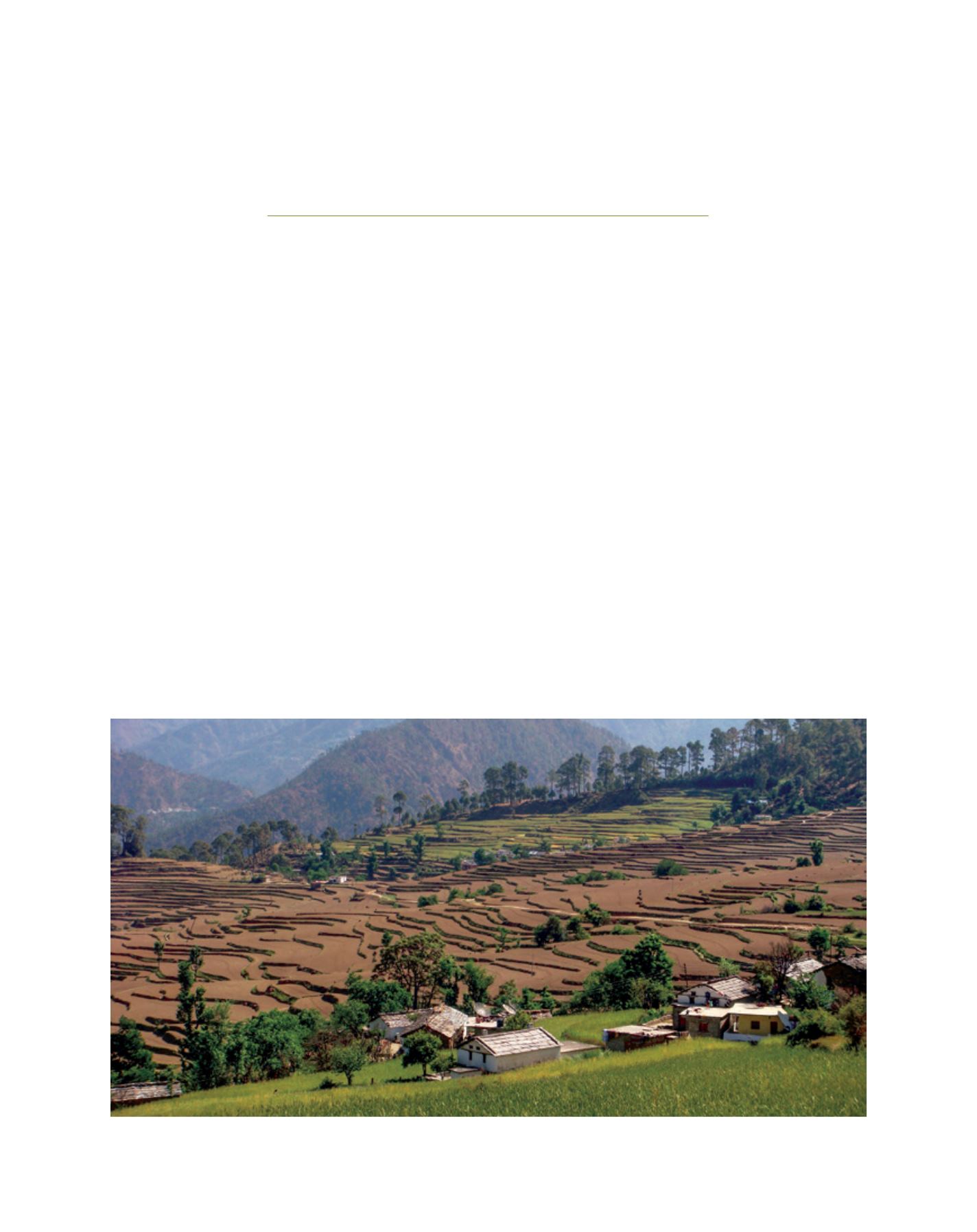

[
] 105
Family and smallholder farming
in Himalayan communities
R.C. Sundriyal, G.C.S. Negi, R.K. Maikhuri, D.S. Rawat, R.S. Rawal and P.P. Dhyani,
Govind Ballabh Pant Institute of Himalayan Environment and Development, India
DR 2817
A
griculture forms the world’s largest commerce sector;
with growing population and increased per capita
consumption it is strongly felt that more produc-
tive agriculture is required to sustain the need of the people
along with protection of its ecological integrity.
1
Across the
globe a large share of traditional societies’ needs are met
from family farming practices that comprise agricultural,
forestry, fisheries, pastoral and aquaculture production
activities, operated and managed by family labour.
Family farming systems are quite prevalent in India, more
so in the Indian Himalayan Region (IHR) that comprises
nearly 18 per cent area of the country, and varies between
4 and 48 per cent among the 12 mountainous states of the
IHR. Agriculture is the major livelihood activity for over 70
per cent of people in IHR. There are diverse agroclimatic
zones in the region that support varied crops, cropping
patterns and crop productivity. In this region family
farming is the predominant form of agriculture for food
production, which is mainly dependent on land, livestock,
forest and traditional knowledge.
The majority of prevalent family farming systems are subsist-
ence types, though there are commercial farming systems as well.
Diversity in physiographic, land, climate and other factors has
caused great variations in the traditional agricultural practices
which provide a range of products to support livelihood. Farmers
maintain crop varieties and livestock according to social needs
and environmental conditions, and mostly follow indigenous
management practices for crop, field, soil fertility and moisture
conservation evolved over the years based on trial and error. In
the northeast region of the IHR shifting cultivation (locally called
jhum) is the most dominant form of family farming, whereas the
northwest region comprises the settled farming systems. Within
these two types there are diverse site-specific variations. A key
feature of IHR agricultural landscapes is that they are managed
for multiple services rather than just for grain production.
Nearly 86 per cent of farmers in the IHR are marginal and
smallholders, and family farming is clearly distinguishable
An agricultural landscape in north-west Himalaya depicting kharif season crops (with standing crops) and field preparation for the rabi season
Image: G.B. Pant Institute
D
eep
R
oots
















